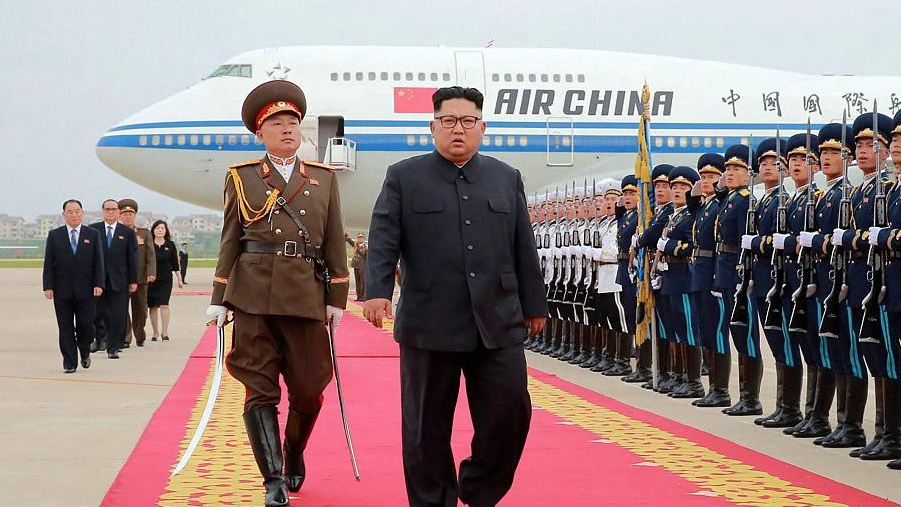One of the most surprising developments on the world stage over the year happened on the
Korean Peninsula. In an astonishing move,
Kim Jong Un declared a moratorium on nuclear and ballistic missile tests and a shift to economic development.
Only a year ago, tensions in the regional powder keg foreboded a looming nuclear war. Back then, Donald Trump belittled Kim Jong Un with "rocket man" and threatened to "totally destroy" the Democratic People's Republic of Korea (DPRK). In response, Kim called the U.S. president a "mentally deranged" "dotard."
However, the enmity, its highest in years, faded rapidly. Kim made 123 public outings, 77.2 percent of which were in relation to diplomatic and economic affairs, according to an analysis the Yonhap News Agency made based on DPRK news reports about Kim. Meanwhile, his appearances on military-related occasions dropped by 80.5 percent from 41 to eight.
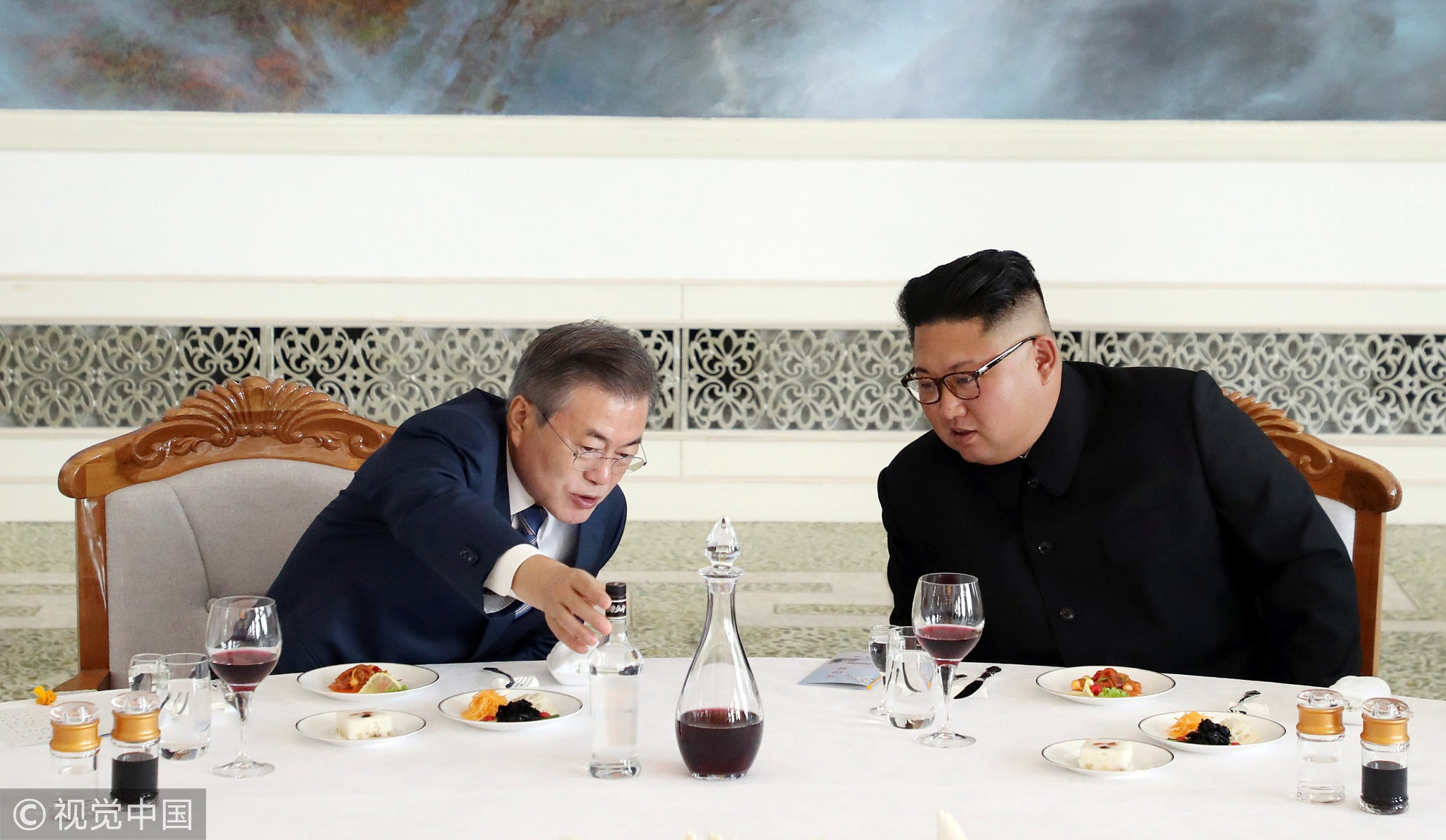
ROK President Moon Jae-in (L) and DPRK leader Kim Jong Un attend a luncheon in Pyongyang, September 19, 2018. /VCG Photo
ROK President Moon Jae-in (L) and DPRK leader Kim Jong Un attend a luncheon in Pyongyang, September 19, 2018. /VCG Photo
Starting with sports diplomacy
Pyongyang's overtures budded on the first day of 2018, when Kim extended his willingness to send a delegation to the PyeongChang Winter Olympics and talk with the Republic of Korea to quench military tensions.
Kim's sports diplomacy boded well for a year-long rapprochement. In late April, the news that the two Koreas would hold their first summit in 11 years made headlines, while spurring doubts over whether Kim would secure greater success than his late father Kim Jong Il, who had made little headway despite taking part in two summits.
But the young Kim presented an intelligence and confidence well beyond his years. Kim and ROK President Moon Jae-in pledged to "approach a new era of national reconciliation, peace and prosperity," setting the "truce village" of
Panmunjom on course to become a "peace border." Many Koreans wept that day as they saw hopes of family reunions over one of the last legacies of the Cold War.
Prior to the summit, Kim paid a visit to Beijing – his overseas debut since he took the DPRK's reins in 2011. He paid two more visits to China and met with Chinese President Xi Jinping within the following three months. His relationship with China is especially valuable, as the economic powerhouse has much to pass on to the DPRK while it begins its path to prosperity.
While Pyongyang was mending fences with Beijing and Seoul at lightning speed, there came an announcement on a Trump-Kim summit in June.
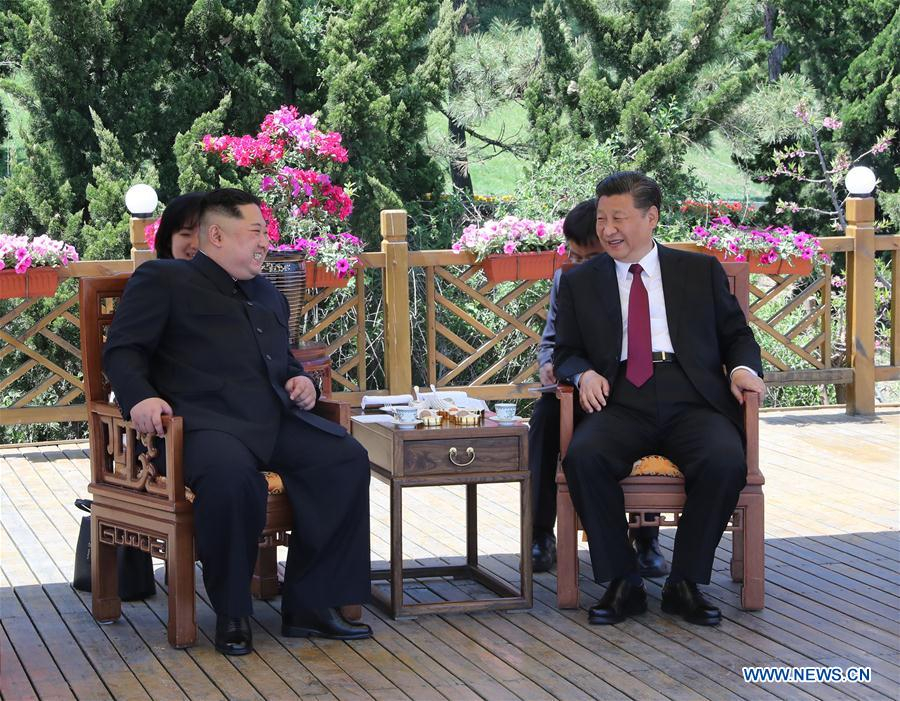
Xi Jinping (R), general secretary of the Central Committee of the Communist Party of China (CPC) and Chinese president, holds talks with Kim Jong Un, chairman of the Workers' Party of Korea (WPK) and chairman of the State Affairs Commission of the Democratic People's Republic of Korea (DPRK), in Dalian, northeast China's Liaoning Province, May 7-8, 2018. /Xinhua Photo
Xi Jinping (R), general secretary of the Central Committee of the Communist Party of China (CPC) and Chinese president, holds talks with Kim Jong Un, chairman of the Workers' Party of Korea (WPK) and chairman of the State Affairs Commission of the Democratic People's Republic of Korea (DPRK), in Dalian, northeast China's Liaoning Province, May 7-8, 2018. /Xinhua Photo
Gaining equal status with the U.S.
A 13-second handshake, a five-hour negotiation, and a four-point joint statement marked the day of the first-ever meeting between a sitting U.S. president and a DPRK leader on Singapore's tropical island of Sentosa.
The courtesy and manner they showed toward each other were poles apart from six months ago when their bellicose insults embroiled the peninsula in a doomsday scenario.
The pair had set a path toward a new type of U.S.-DPRK relations, which offered a flexible paradigm for the two sides to engage in dialogue without compromising their respective positions. The agreement they had reached, though short on details, shows that the two didn't only travel to Sentosa for a photo op.
The remarkable day concluded a fraught past between the two countries while inaugurating a length and high-stakes process.
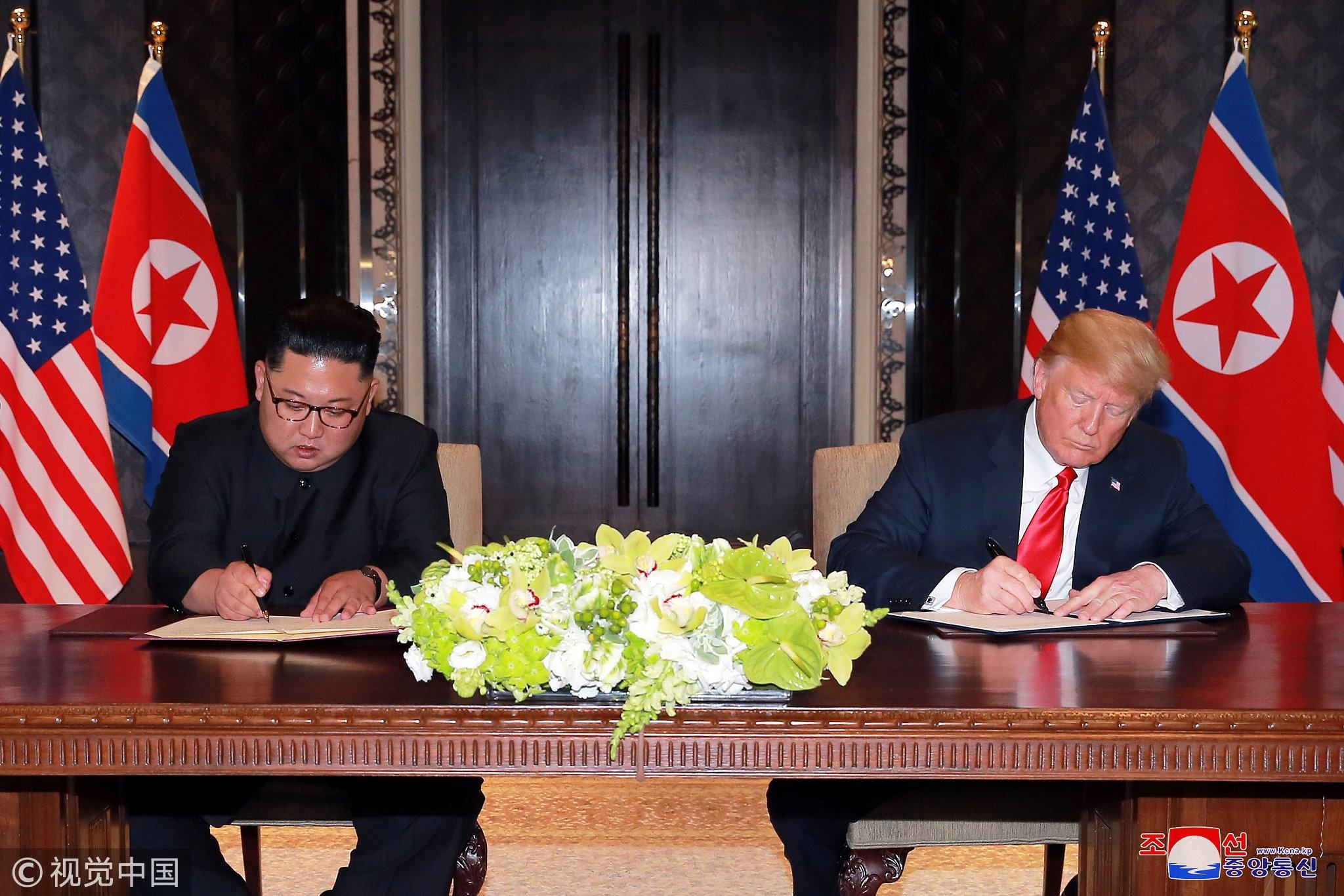
U.S. President Donald Trump (R) and DPRK leader Kim Jong Un sign documents in Singapore on June 12, 2018. /VCG Photo
U.S. President Donald Trump (R) and DPRK leader Kim Jong Un sign documents in Singapore on June 12, 2018. /VCG Photo
Looking ahead
The rapprochement with major regional stakeholders has given Kim a tremendous boost on the world stage, as he had seized a moment that had eluded his father and grandfather.
However, whether this path toward reconciliation can continue depends on all stakeholders, while establishing a framework that all parties can commit to. Only then can this relic of the Cold War be put to rest and peace be achieved.
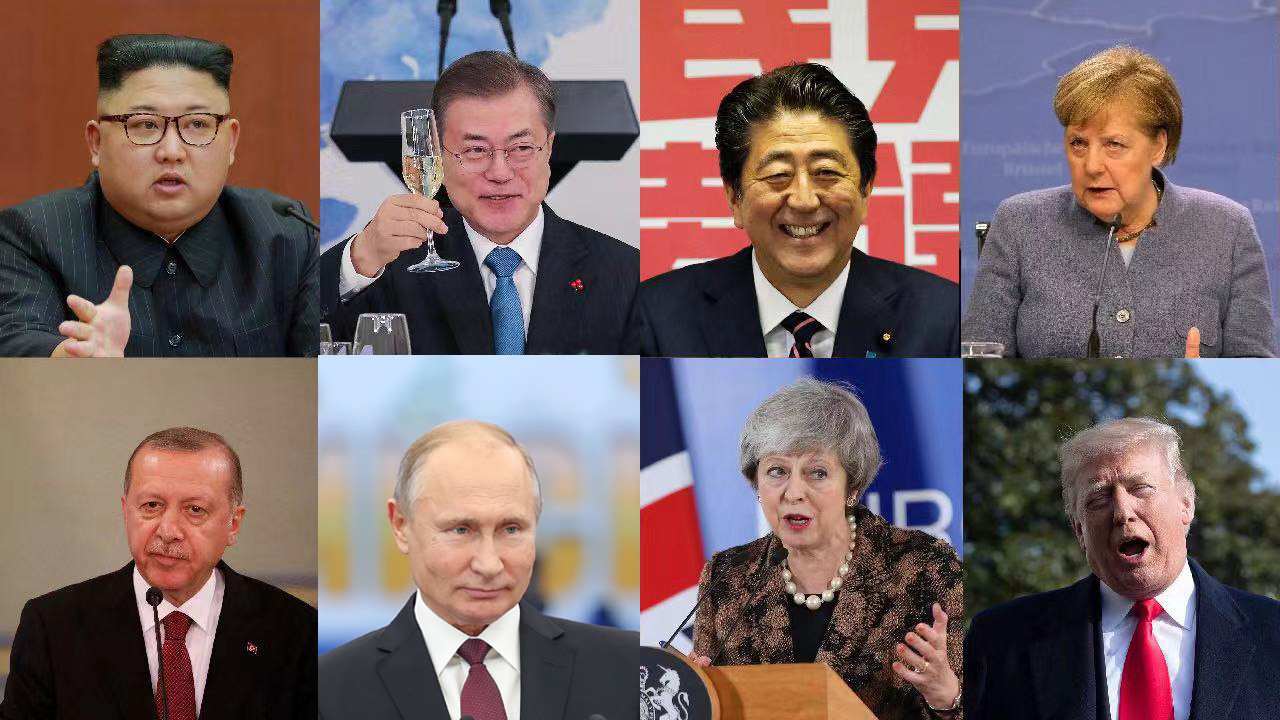
(top left to right) Kim Jong Un, Moon Jae-in, Shinzo Abe, Angela Merkel; (bottom left to right) Recep Tayyip Erdogan, Vladimir Putin, Theresa May, Donald Trump
(top left to right) Kim Jong Un, Moon Jae-in, Shinzo Abe, Angela Merkel; (bottom left to right) Recep Tayyip Erdogan, Vladimir Putin, Theresa May, Donald Trump
This is the first article of our “World Leaders” series, which takes a look at eight people who shaped the global political discourse in 2018. These figures dominated the year's headlines through high-profile appearances and maneuvering, forging new relationships and severing old ones. Tomorrow we'll focus on the man behind the mediation between Kim Jong Un and Donald Trump. Stay with us.

